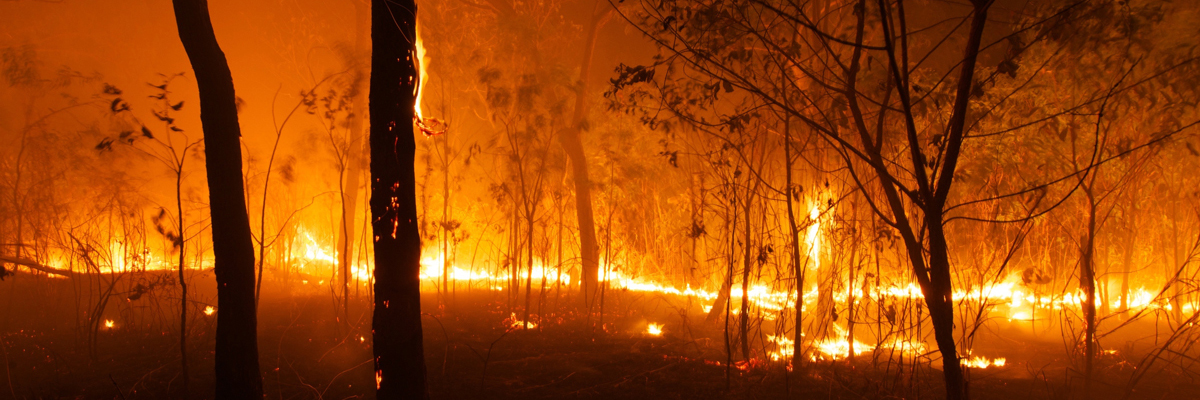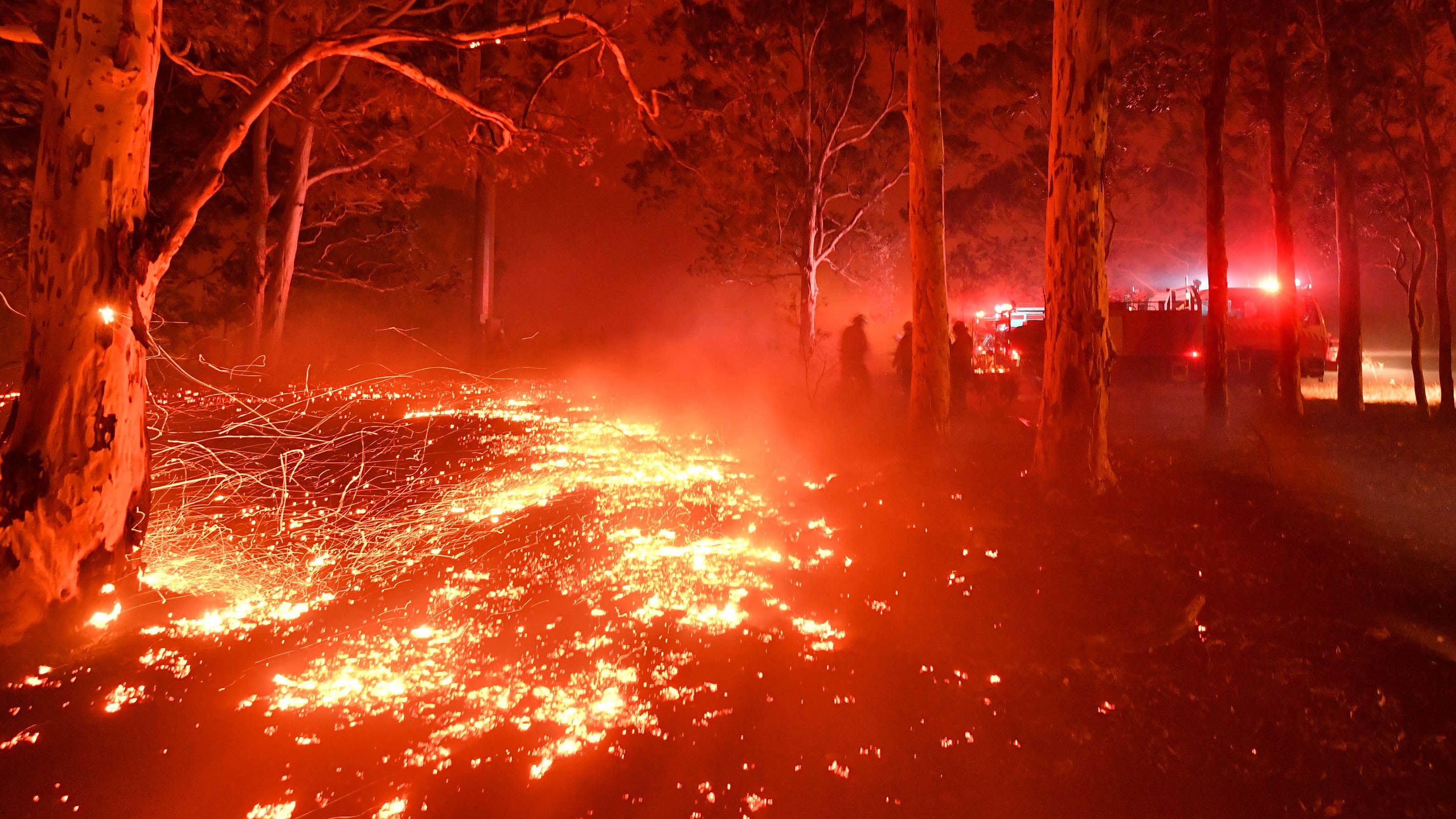Past Compliance: Enhancing Home Safety with a Detailed BAL Report
Past Compliance: Enhancing Home Safety with a Detailed BAL Report
Blog Article
The Importance of Bushfire Administration in Fire Security
In the realm of fire defense, the relevance of effective bushfire management can not be underrated. As communities globally face increasing circumstances of wildfires, the positive strategy to stop and mitigating these natural disasters through calculated bushfire management strategies has actually become an important aspect. Beyond the prompt danger to human life and home, the interaction between bushfire monitoring and eco-friendly conservation, neighborhood participation, and climate change presents intricate obstacles that demand detailed options.
Importance of Proactive Bushfire Prevention
Aggressive bushfire prevention approaches are important in reducing the devastating influences of wildfires on ecological communities and communities. By taking preventative procedures prior to a bushfire happens, the risks connected with these natural calamities can be significantly decreased. One essential facet of positive bushfire prevention is fuel administration. This entails decreasing the quantity of flammable product, such as dead greenery and completely dry leaves, that can serve as gas for fires. Fuel administration techniques consist of recommended burns, where regulated fires are purposely lit to lower the build-up of flammable product.
Educating the public on fire safety and security practices and promoting area awareness concerning the relevance of bushfire prevention are important parts of proactive techniques. Ultimately, positive bushfire avoidance plays a significant duty in safeguarding communities and communities from the damaging impacts of wildfires.
Function of Area Involvement in Fire Defense
Involving the community in fire security initiatives is important to improving the efficiency of proactive bushfire prevention strategies. Community involvement plays a critical duty in promoting a cumulative understanding of the dangers positioned by bushfires and the relevance of preparedness procedures. By including local residents, authorities can share vital info on fire safety and security techniques, emptying treatments, and early caution systems, empowering people to take aggressive actions to safeguard their buildings and lives.
By cultivating a society of readiness and cooperation, areas can enhance their capability to respond successfully to bushfire emergencies, decreasing the impact on residential properties and lives. Ultimately, neighborhood interaction is a foundation of detailed fire protection techniques, stressing the relevance of cumulative activity in securing prone areas from the hazard of bushfires.
Relevance of Wildlife Conservation in Bushfire Administration
Conservation of wildlife plays an important duty in reliable bushfire monitoring methods, ensuring the security of varied environments and biodiversity in fire-prone regions. Wild animals conservation is important as it adds to the overall strength of ecological communities, helping in their capacity to stand up to and recuperate from the effect of bushfires. By conserving habitats and protecting numerous species, the all-natural equilibrium within these ecological communities is maintained, which is crucial for their long-term wellness and sustainability.
In addition, wild animals conservation likewise assists in minimizing the threat and intensity of bushfires. Healthy environments with unspoiled wild animals populaces can function as all-natural firebreaks, decreasing the spread of fires and restricting their destructive capacity (Bushfire Risk). Certain animal varieties, like burrowing animals or birds that spread seeds, play special functions in aiding or protecting against fires in the post-fire regeneration of habitats
Including wildlife conservation right into bushfire monitoring techniques is not only crucial for securing biodiversity however also for promoting the general health and wellness and resilience of environments in the face of enhancing fire hazards.
Advantages of Strategic Fuel Reduction Programs
Tactically applying gas reduction programs is important in alleviating the danger and effect of bushfires in fire-prone regions. These programs entail regulated burning, mechanical clearing, and other techniques to minimize the amount of combustible vegetation offered to sustain i was reading this wildfires. By strategically reducing gas loads in key locations, such as near household areas or vital framework, the intensity and spread of bushfires can be substantially lowered.
One of the key advantages of gas reduction programs is the improvement of total fire durability in an environment. By developing strategic fuel breaks and decreasing the continuity of greenery, these programs aid to disrupt the path of a bushfire, making it simpler for firefighters to snuff out the blaze and consist of. Furthermore, fuel reduction programs can secure biodiversity by stopping exceedingly extreme fires that can devastate habitats and endanger wildlife populations.
Furthermore, these programs can also safeguard human lives and home by decreasing the danger of tragic fires that pose a substantial threat to areas. Ultimately, tactical fuel decrease programs play a critical duty in proactive bushfire administration and cultivating a much safer environment for both people and nature.
Influence of Environment Change on Bushfire Risk

Higher temperature levels cause drier plant life, making it more vulnerable to ignition. Minimized rains in certain areas lengthens drought conditions, better raising the flammability of the landscape. Furthermore, the altering environment has modified wind patterns and weather, resulting in more erratic fire behavior and rapid fire spread.
As the climate continues to alter, the regularity and strength of bushfires are anticipated to increase, demanding a positive and flexible method to bushfire management. Approaches must progress to represent the changing threat landscape, integrating climate estimates and considering long-lasting resilience in fire management planning. Dealing with the influence of climate modification on bushfire risk is crucial in establishing effective strategies to secure lives, residential or commercial property, and the setting.
Verdict
Finally, aggressive bushfire avoidance, area basics engagement, wildlife preservation, strategic gas decrease programs, and consideration of environment modification are important components in effective fire security. By applying these approaches, we can better handle bushfire dangers and secure both human lives and the atmosphere. BAL Report. It is imperative that stakeholders interact to focus on these procedures to reduce the terrible impact of bushfires on neighborhoods and ecological communities

As the climate proceeds to transform, the frequency and intensity of bushfires are expected to climb, necessitating a flexible and proactive strategy to bushfire management.In final thought, proactive bushfire prevention, community involvement, wild animals conservation, calculated fuel decrease programs, and factor to consider of climate adjustment are important elements in reliable fire security.
Report this page